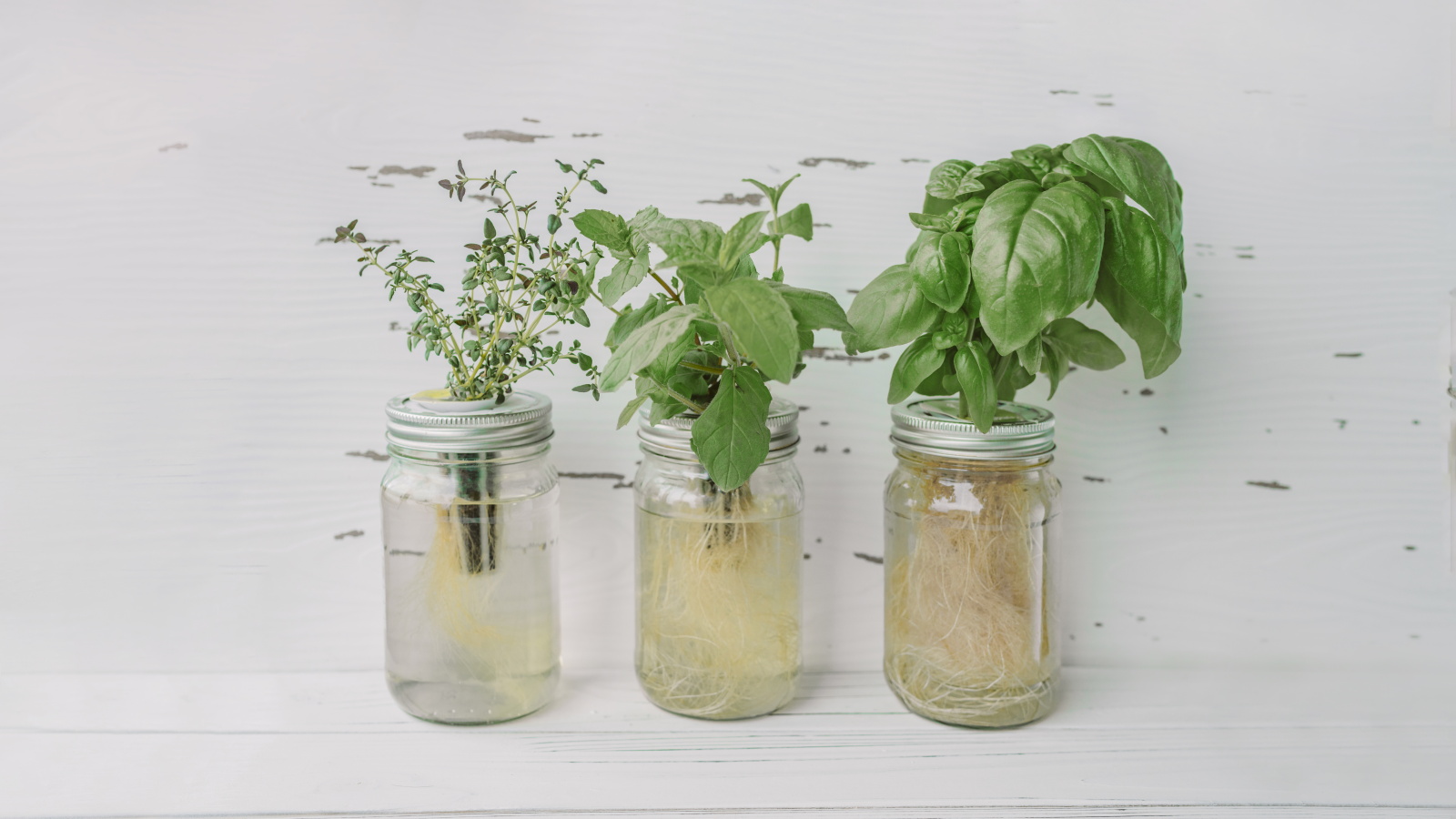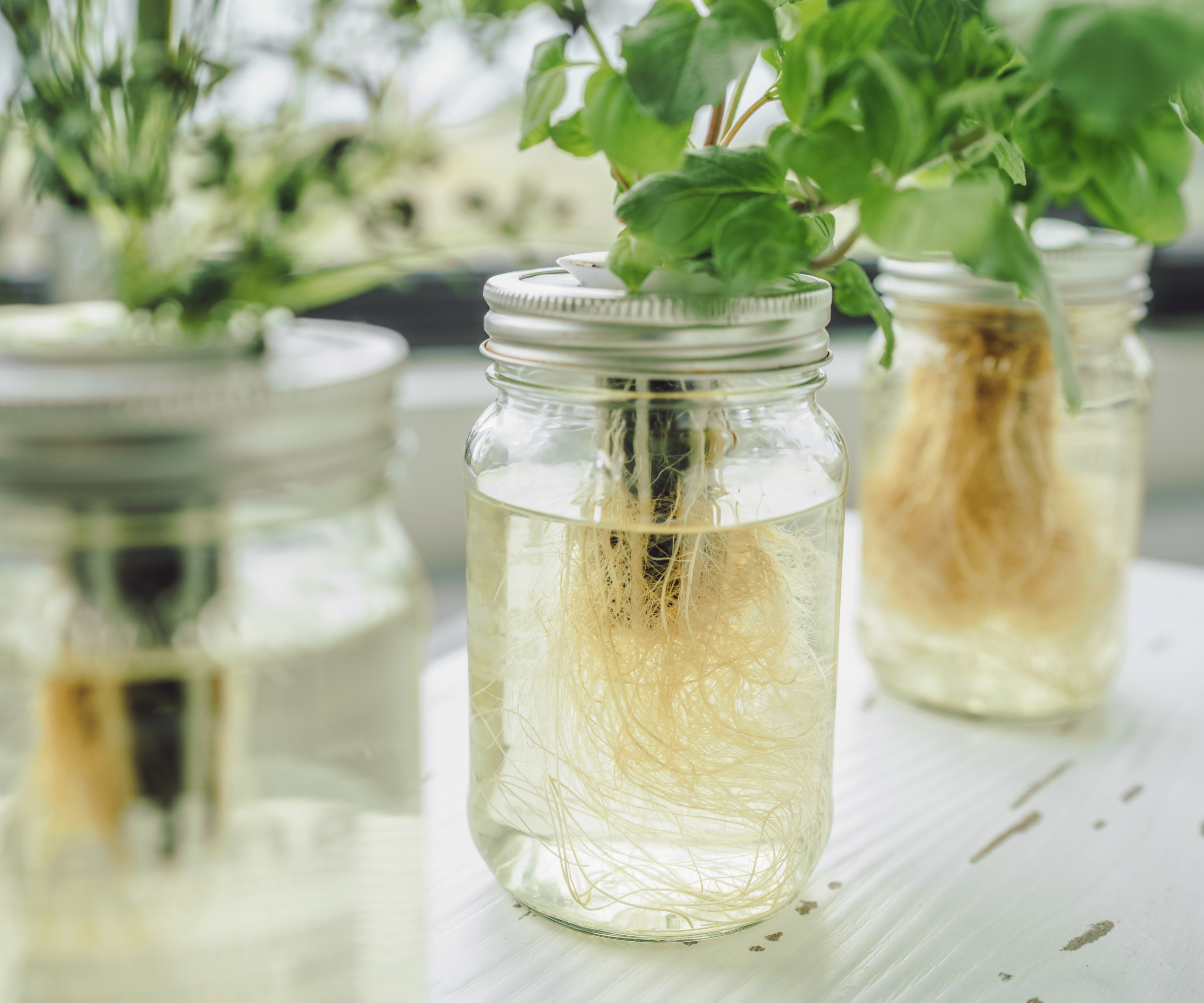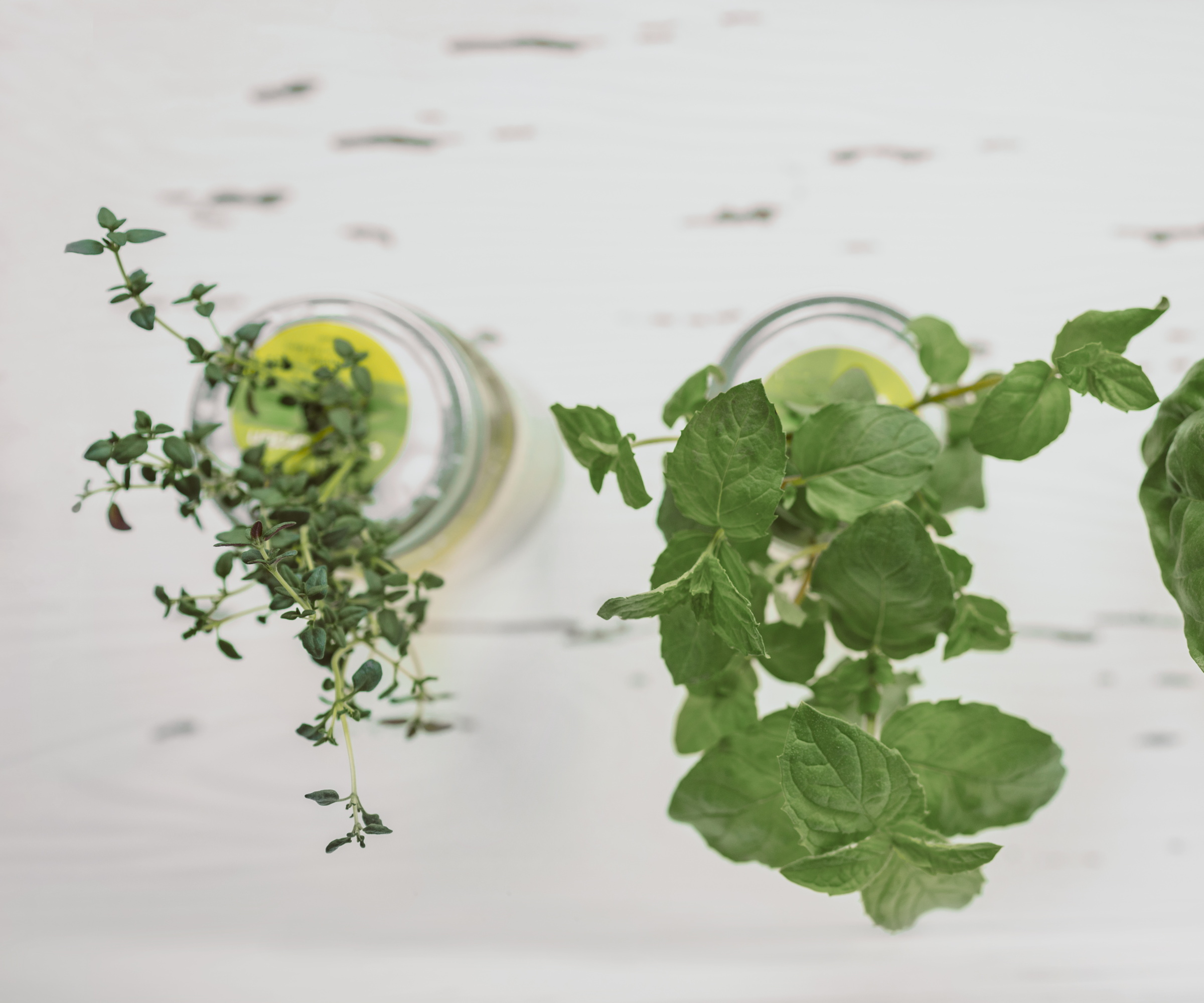
If you're starting to experiment with hydroponic growing, you might have stumbled across the term 'Kratky method.' It's a hydroponic technique that uses basic materials and little effort to successfully grow plants in water, making it a favorable method to use.
Arguably the most low-maintenance DIY hydroponic garden you can create, the Kratky method doesn't require any mechanics, such as the water pumps used in electrical hydroponic systems. Instead, it focuses on the suspension of plants above water, allowing indoor gardeners to grow their own crops without the need for lots of equipment.
This inexpensive hydroponic gardening solution is easy to set up at home, and hydroponic experts have shared with us just how to go about it. Here, we look at how the Kratky method works and share tips on how to use it successfully.
What is the Kratky hydroponic method?

The most basic explanation of the Kratky method is a set-up where plants are suspended above a reservoir of nutrient-rich water where their roots partially submerged - much like the technology of aeroponics that led to fogponics - allowing for roots to access both water and air for growth.
It's named after Bernard Kratky, a researcher at the University of Hawaii who first proposed the concept in his 2009 journal. 'It's a passive form of hydroponics in which pumps and electricity are not needed,' explain Carson and Katie Prince from Kratky Hydroponics in New York.
An electrical hydroponic system - like this one from Amazon - uses pumps, filters, and grow lights to ensure plant roots are supplied with sufficient essential plant nutrients to grow, but none of this is required for the Kratky method to be successful.
Instead, the elevated plants are simply positioned to receive all the water, nutrients, and oxygen they need for growth.
How to use the Kratky method at home

It's fairly straightforward to have a Kratky hydroponic set-up at home. You will need:
- A container - like these Kratky planters from Amazon.
- Net pots - like these net pots from Amazon.
- Grow rocks - or rockwool cubes, from Amazon.
- Water-soluble nutrients - like this liquid plant food for hydroponics from Amazon.
'Select a food grade container with holes for a net pot,' Carson and Katie advise. You can even use these jars from Walmart to make a DIY Kratky planter by putting a hole in the lids.
Use grow rocks or rockwool cubes to plant your seeds in the net pots, before placing the net pots in the holes of the planters. They should sit suspended in this position.
'Mix the desired amount of water with nutrients into your chosen container and refill when it gets low,' Carson and Katie explain.
Avoid the hydroponic gardening mistake of filling the water too high in the container. This method requires roots to only be partially submerged, so aim to leave around three quarters of the roots exposed to the air. As Carson and Katie note, make sure to refill your container as the water depletes so the roots are always in contact with water.
You should also keep your Kratky set-up somewhere bright to encourage root development. You can optionally put in place grow lights for houseplants to aid this. These grow lights from Amazon are a good choice, with a timer function to turn the lights off automatically.
Shops Kratky hydroponics essentials
These Kratky planters are perfect for passive hydroponic growing. They're made from a lightweight, durable material and are designed to suspend plants above water level.
Provide your hydroponic plants with water-soluble macronutrients - A nutrients - and micronutrients - B nutrients - to support plant growth.
This hydroponics kit includes grow rocks and net pots to get your Kratky hydroponic garden started.
FAQs
Are there any disadvantages of the Kratky method?
There are plenty of pros and cons of hydroponic gardening and the Kratky method is no different. By lacking a water pump feature, Kratky gardens are susceptible to becoming dirty quicker and likewise may experience a build-up of algae. Leaving the water in this way can make hydroponic plants susceptible to pests and diseases. However, you can prevent these issues by keeping on top of changing out the water regularly and replenishing the nutrient solution.
Can you use the Kratky method outdoors?
Yes, it is possible to use the Kratky hydroponic method outdoors. This will require the same set-up as an indoor Kratky hydroponic garden - a container, net pots, grow rocks, and a nutrient solution. Something to keep in mind when using this method outdoors, however, is the weather. You will need to protect seedlings from wind and cold conditions, so choose a sheltered position outdoors and bring your Kratky garden indoors for the colder months.
Although designed with crops in mind, you can use the Kratky method for a wide range of plants. Not only can you grow herbs indoors using this kind of set-up and expand your indoor kitchen garden, it's also possible to grow some houseplants without soil using this method. Some of the best indoor plants to try growing with the Kratky method include ivy, spider plants, pothos, and you can even grow orchids in water.







